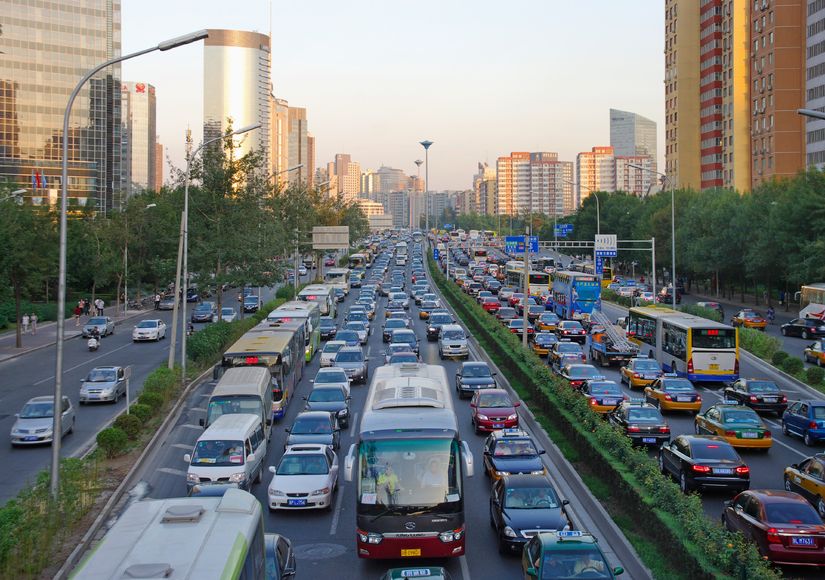
Image: INQUIRER.net stock photo
The number of cars in Chinese roads are rapidly increasing and with it the decrease in traffic quality.
Traffic officials from Jinan, Shandong province deployed their own version of the “zipper truck” and began testing the effectivity of movable median barriers (MMB).
These barriers are specially made to be picked up by a “zipper truck” and then moved so that one side of the road can accommodate more cars during certain times of the day like rush hour, reports China Daily.
The idea is not new as the city of Shenzhen in Guangdong province deployed the first zipper truck in China last October 2016, which cost of 1.7 million yuan (roughly P13 million). However both machines were inspired by the “zipper truck” found at the Golden Gate Bridge in San Francisco, United States.
US zipper truck. Image: Golden Gate Bridge official website
“Traffic is usually heavy in one direction and light in the other during rush hours. The zipper trucks on the Golden Gate Bridge made us green with envy,” the report quotes Jinan-based driver Zhang Weimin.
This concept of moving barriers to make certain lanes wider is also not new. Cities like Beijing, Changsa and Nanjing adjust median barriers manually during rush hour. Unfortunately, moving the barriers this way was slow and difficult.
The Jinan zipper truck looks more like a bus than a truck. It is actually a vehicle refitted to handle MMBs. The Qianjin Machinery Factory in Heibei province installed an S-shaped conveyor belt to allow the zipper truck to pick up MMBs on one side of the truck then lay them out on the other.
Each link of the MMBs weigh more than 50 kilograms and there are around 20 to 30 links per chain.
Barrier realignment is scheduled to happen between 5 p.m. and 7 p.m. on weekdays to address traffic congestion during rush hour.
Traffic police will then monitor the pilot project’s performance. If found effective, more zipper trucks and MMBs will be deployed on major roads. Alfred Bayle/JB
RELATED STORIES:
Japan taxis to adapt app for booking rides
Chinese resto owners appeal to diners to settle P450,000 unpaid bills
Severed arms found in Chinese man’s bag at a bus station